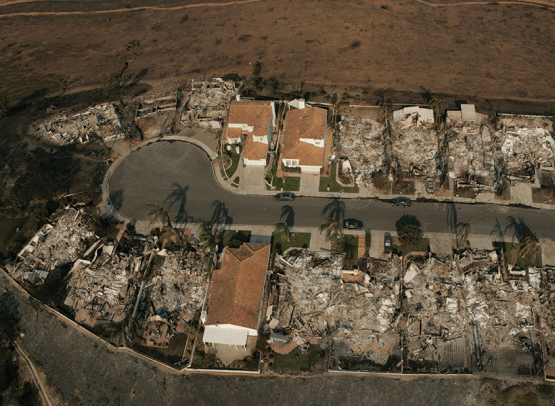Disaster
Disaster Resistent

2020 California wildfire season was a record-setting year of wildfires
By the end of the year, 9,639 fires had burned 4,397,809 acres, making 2020 the largest wildfire season recorded in California’s modern history (according to the California Department of Forestry and Fire Protection).
California’s August Complex fire has been described as the first “gigafire”, burning over 1 million acres across seven counties, an area larger than the state of Rhode Island. The fires destroyed over 10,000 structures and cost over $12.079 billion in damages, including over $10 billion in property damage and $2.079 billion in fire suppression costs.
Our Solution to Building a Energy Efficient Home or Business

• Non-toxic, fire-retardant expanded polystyrene foam provides a fire protection rating of up to 4 hours.
• impact resistance and will withstand winds of up to 250 mph
• steel reinforced solid concrete core form’s flexibility in being able to add and accurately position both vertical and horizontal steel as needed to resist seismic forces based
INSUL-DECK Roofs and Floors can be built to withstand tornado-level winds, the impact of flying debris, and fires. Elevated buildings are easily constructed with INSUL-DECK raised slabs to minimize or eliminate flood damage. Resilient buildings keep occupants and property safe.

• Class 1 Fire Resistant
• Can resist up to 2200 F
• Water-resistance, mold and mildew protection
Insulating concrete forms like Nudura and Insul-Deck resist fires and Hurricanes in several ways
The most obvious is their structural concrete core that will not weaken, warp, twist, or burn regardless of the fire’s heat.
In so-called “fire-wall” tests, ICF walls are subjected to continuous gas flames and temperatures of up to 2000°F for as long as 4 hours. All of the leading ICF brands took the heat without any sign of weakening. In contrast, wood frame walls typically collapse in an hour or less. Note that these tests were performed on monolithic, or “flat-wall ICFs, with no breaks in the concrete layer. Screen-grid ICFs have fire ratings of two hours or less.
The concrete core also prevents fire by slowing the conduction of heat from one side of the wall to the other. In PCA fire tests, ICF wall segments did not allow enough heat through to start a fire on the cool side of the wall for 2-4 hours.
Contrary to popular belief, the foam used in ICFs will not burn. It will melt if exposed to high heat, but it will not contribute any fuel to the fire. In fact, it is virtually “self-extinguishing,” thanks to a flame retardant all of the leading ICF manufacturers add to the EPS foam.

WITCH CREEK FIRE
Ellsworth’s neighborhood was hit hard. “The flames came right up to the doorstep and completely surrounded the home. Then the winds changed, and the fire came back again,” says Ellsworth. Forced to evacuate during the worst of the fires, he was shocked by the devastation he returned to.
“It brought tears to my eyes,” he says. “I was seeing house after house that had been completely leveled, and then there, on top of an absolutely charred hill, was my home and warehouse, virtually unscathed.”
SURVIVING DORIAN
Located in the Eastern Shores community of Marsh Harbour, the home was exposed to pounding surf and howling winds for three full days, with gusts in excess of 200 mph. At the time the storm hit, the owners were in the United States, and as a result, the house lost most of the windows. The cement-board siding was also peeled off in several areas, but the structure of the building and its contents survived unscathed.
Dennis Ciaglo, the contractor who built the home back in 2011, says, “It was very emotional for us the builder. It was the first time we could prove that our building could withstand 250 mph winds. Needless to say, we were very proud to see that house standing in all its glory after Dorian when all around were destroyed dwellings.”